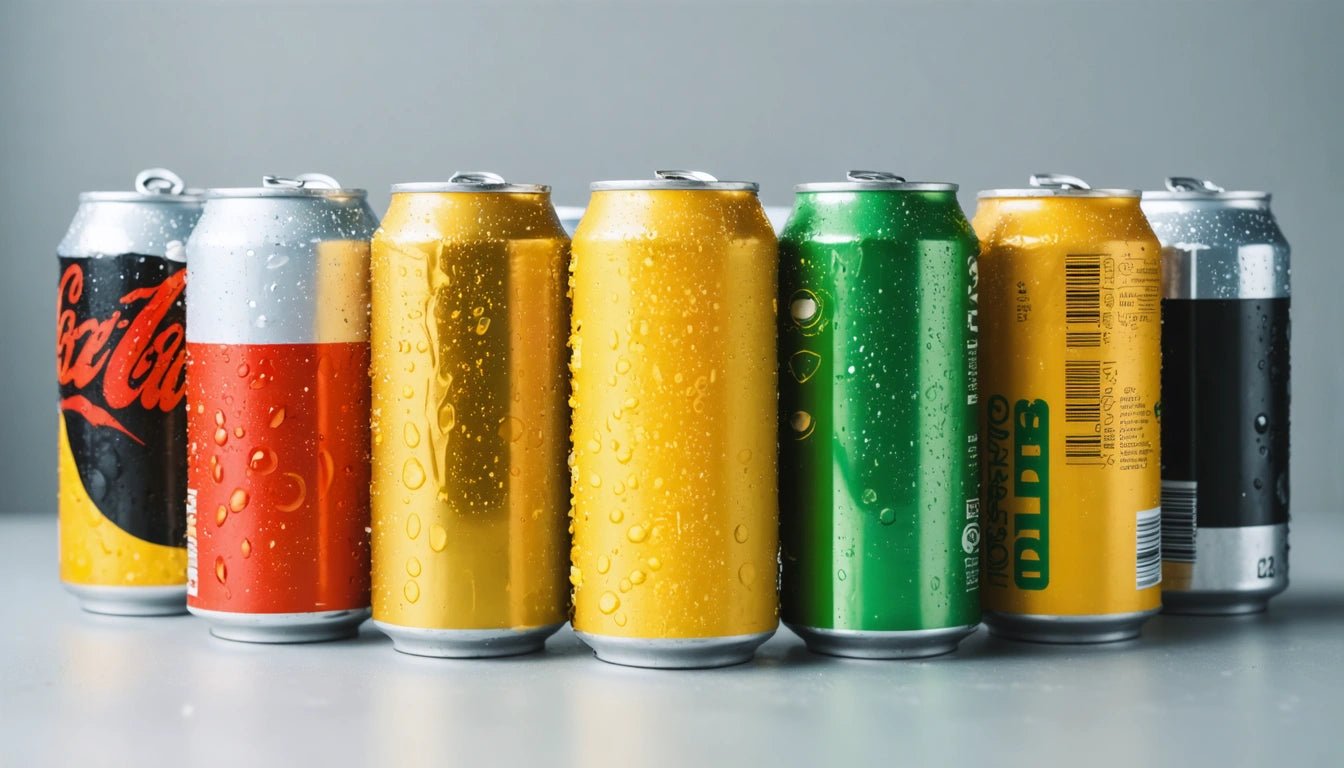Table of Contents
Understanding the Dimensions and Materials of Standard Soda Cans
Soda cans are ubiquitous in modern life, but few people stop to consider their precise dimensions, materials, or engineering. These seemingly simple containers represent decades of design evolution and manufacturing efficiency. Whether you're curious about how tall a Coke can is or what materials go into a standard soda can, this comprehensive guide covers everything you need to know about these everyday beverage containers.
Standard Soda Can Dimensions: Height, Width, and Volume
The standard 12-ounce (355 ml) soda can follows remarkably consistent dimensions across major brands like Coca-Cola, Pepsi, and others. These specifications have been standardized to optimize manufacturing, shipping, and consumer use.
Height and Width Measurements
A standard 12-ounce soda can measures approximately:
- Height: 4.83 inches (122.7 mm)
- Diameter: 2.6 inches (66 mm) at the widest point
- Circumference: 8.2 inches (208 mm)
These dimensions answer common questions like "how tall is a soda can in inches" or "how wide is a Coke can." The height of a standard can of soda is designed to fit comfortably in the average hand while providing adequate volume for the beverage.
For comparison, these dimensions are similar to those found in standard beer cans, which share manufacturing infrastructure with soda containers.
Materials and Composition of Modern Soda Cans
When considering what a soda can is made out of, the answer involves multiple materials carefully selected for function, cost, and environmental impact.
Primary Materials
Modern soda cans typically consist of:
- Body: Aluminum (3004 alloy) - 0.097-0.099 mm thick
- Top: Aluminum (5182 alloy) - slightly thicker to withstand pressure
- Tab: Aluminum (5042 or 5182 alloy)
- Interior Lining: Epoxy-based polymer coating (prevents metal-beverage interaction)
The use of two different aluminum alloys optimizes the can for both manufacturing efficiency and structural integrity. The body needs to be malleable during production but strong during use, while the top must withstand the pressure of opening and the stress of the tab mechanism.
Similar material considerations come into play when designing specialized packaging for different product types, where material choices must balance protection, presentation, and practicality.
Size Variations: From Mini to King Size
While the standard 12-ounce can dominates the market, various Coca Cola can sizes and other brand variations exist to meet different consumer needs.
Common Soda Can Size Variations
- Mini/Slim Can: 7.5 oz (222 ml) - 6.125 inches tall, 2.125 inches diameter
- Standard Can: 12 oz (355 ml) - 4.83 inches tall, 2.6 inches diameter
- Tall Boy/King Size: 16 oz (473 ml) - 6.125 inches tall, 2.6 inches diameter
- European Standard: 330 ml (11.2 oz) - 4.83 inches tall, 2.6 inches diameter
Understanding these variations helps answer questions like "how big is a can of Coke" in different markets or product lines. The standard dimensions have remained relatively stable since the 1980s when the modern can design was perfected.
For a broader perspective on beverage container sizes, you might also explore bottle size variations across different drink categories.
The Manufacturing Process Behind Soda Cans
The journey from raw aluminum to finished soda can involves a remarkable engineering process that balances speed, precision, and efficiency.
Key Manufacturing Steps
- Blanking: Circular discs cut from aluminum sheets
- Cupping: Discs formed into shallow cups
- Drawing and Ironing: Cups stretched and thinned into can bodies
- Trimming: Excess material removed for uniform height
- Washing: Cans cleaned to remove lubricants
- Printing: Exterior designs applied
- Internal Coating: Polymer lining sprayed inside
- Necking: Top portion narrowed to reduce material in lid
- Flanging: Rim created for lid attachment
- Lid Application: Separate production line creates and attaches lids
This high-speed process can produce up to 2,000 cans per minute in modern facilities, highlighting the engineering precision behind these everyday objects.
Environmental Impact and Recycling Potential
The environmental footprint of soda cans depends largely on their lifecycle management, particularly whether they're recycled.
Recycling Statistics
- Aluminum cans are 100% recyclable
- Recycling rates vary by country (45-97%)
- A recycled can can return to shelves in as little as 60 days
- Recycling aluminum uses 95% less energy than producing new aluminum
- Each recycled can saves enough energy to power a TV for 3 hours
The soda can meaning in environmental terms has evolved significantly, from being seen as disposable waste to becoming a model for circular economy principles when properly recycled.
The history of soda can development shows a consistent trend toward lighter, more recyclable designs that maintain structural integrity while using less material.
Future Innovations in Beverage Container Design
The standard soda can continues to evolve, with several innovations on the horizon that may change how we think about these familiar containers.
Emerging technologies include:
- Thermochromic inks: Color-changing indicators showing when beverages are properly chilled
- Ultra-lightweight designs: Further reducing material while maintaining strength
- Enhanced recycling systems: Improving collection and processing efficiency
- Bio-based internal coatings: Replacing traditional epoxy linings with plant-derived alternatives
- Digital integration: QR codes and NFC tags enabling consumer interaction
Understanding the dimensions and materials of standard soda cans provides insight into the remarkable engineering behind these everyday objects. From answering simple questions like "how long is a soda can" to exploring their environmental impact, these containers represent a perfect balance of form, function, and efficiency that continues to evolve with new technologies and consumer expectations.



















